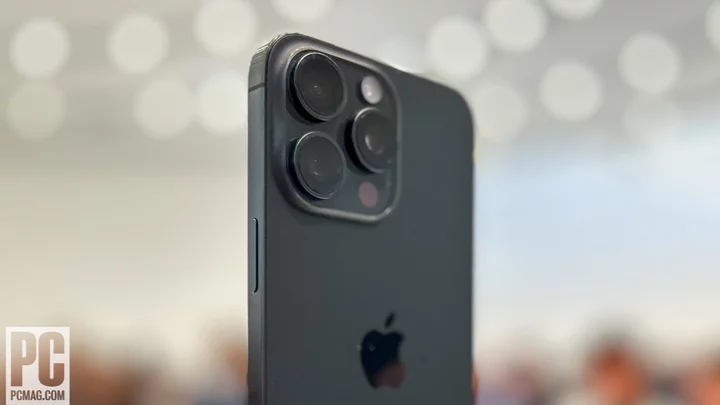The competition to make the best smartphone camera is a fierce one. Apple, Google, and Samsung typically jostle amongst one another for the top spot, though you can't count out the efforts of phone makers such as Honor, OnePlus, and Oppo. In each successive generation of flagships, we see more complex camera designs that use multiple sensors and lenses to bring a wide range of creative and compelling features to the fore.
One of those features is optical zoom, or the use of lenses to increase the size of the image reaching the sensor. Smartphones have used optical zoom for years. Apple first introduced 2x optical zoom to its products with the iPhone 7 Plus back in 2016. Others have taken it much further. The Samsung Galaxy S23 Ultra, for example, offers 10x optical zoom.
(Credit: Apple)This year, to stay ahead of (or maybe catch up with) its competitors, Apple has added an interesting new twist to the iPhone 15 Pro Max camera to achieve 5x optical zoom: a tetraprism. What on earth is that?
"We created a state‑of‑the‑art tetraprism design—a folded glass structure below the lens—to reflect light rays four times over," Apple explains on its site. "This allows light to travel for longer in the same space, giving you a new focal length that really goes the distance."
Cutaway of internal tetraprism design (Credit: Apple)The tetraprism is basically a periscope, or a way to bend light multiple times through glass, which is a tool other phone makers have used in their cameras since 2017 to bring faraway subjects closer to your smartphone. For example, the Huawei P30 Pro, which went on sale in March 2019, was among the first to reach the market with a periscope camera design. The Oppo Reno 10x Zoom followed, as did the Samsung Galaxy S20 Ultra. These offered between 5x and 10x optical zoom that, when paired with digital cropping, allowed for features such as Samsung's Super Zoom (100x magnification) and Google's Super Res Zoom (30x magnification).
With all that magnification, however, every little movement of your hand is multiplied. This can lead to shaky, out-of-focus shots if you don't lean against something or use a tripod. That's where optical image stabilization, or OIS, comes in.
"To support the tetraprism design, we pioneered a 3D sensor‑shift optical image stabilization and autofocus module that moves in all three directions," says Apple. "Our most advanced stabilization system ever delivers twice as many micro-adjustments as before." The sensor for the 5x optical zoom camera can move up to 10,000 times per second in multiple planes to counteract the user's movements. The result is zoomed-in shots that are still relatively sharp.
(Credit: Angela Moscaritolo)The iPhone 15 Pro Max is the only one of the new iPhones to support 5x optical zoom. Apple says it's equivalent to a 120mm lens used on a full-frame camera. Combined with the ultrawide camera's 13mm lens, the iPhone 15 Pro Max has a maximum optical zoom range of 9.2x. The smaller iPhone 15 Pro offers just 3x optical zoom via its telephoto lens, which equals last year's iPhone 14 Pro Max. The iPhone 15 and 15 Pro are capable of just 2x optical zoom.
Competition looms large, however: Google has used periscope cameras for advanced zoom in its Pixel Pro phones for several years now. The company is set to reveal the Google Pixel 8 Pro in just a few short weeks, and we expect it to have a significant level of optical zoom via its periscope-enabled telephoto camera.
We look forward to comparing the camera powers of these leading smartphones, so be sure to stay tuned for the latest coverage.

